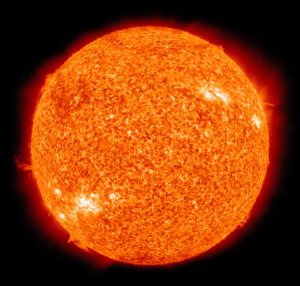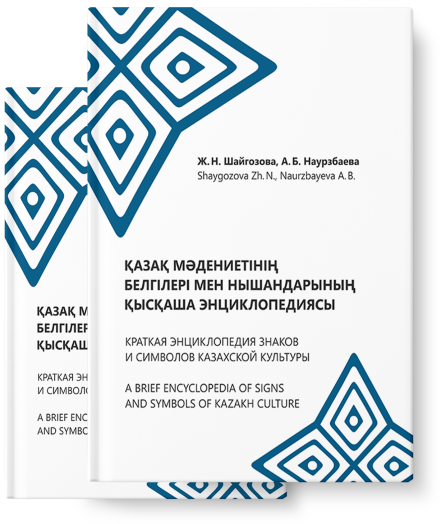
A short encyclopedia of
Signs and symbols of
Kazakh culture
KÜN / SUN

The oldest symbol and object of worship of many peoples – the sun. The course of the sun over the skyscraper, the solar days and the solstice served from time immemorial as milestones to which all important cycles of human activity were oriented. In many mythologies it is the supreme deity: the Egyptian Ra, the Persian Mitra, the Greek Helios-Helium, the Aztec Tonatiu, the Japanese Amaterasu, and so on.
Zhanabayev believes that in Kazakh mythology the sun is associated with batyr (symbol of masculinity), who in his own way tirelessly fights day after day with dark forces. With his ray-arrows he drives away the dark forces that creep into the crevices, hide in ravines, hide behind rocks and hills. It is no coincidence that the Kazakhs have the expression “Tañ atqan” – “the sun shot”. Around noon the forces of the batyr weaken, and the dark forces begin their struggle again. Then the sun batyr falls into the realm of Erlik (in the west), to “rise” again in the morning “in the east as a young batyr. In such a cycle of sunrise and sunset the Kazakhs reflected the eternal struggle of the forces of good and evil, the immortality of the epic hero – the Sun.
In the eyes of the Kazakhs, the sun is a symbol of longevity, wealth and abundance, with which a large number of rites and rituals are associated. According to the Kazakhs, the setting sun is able to eliminate the disease, which is expressed in the rite “ūshyqtau”. The healer, spitting water on the sick person’s face, says: “ūshyq, ket päle, ket, ket!” (Go ilness, go away, go away!).

